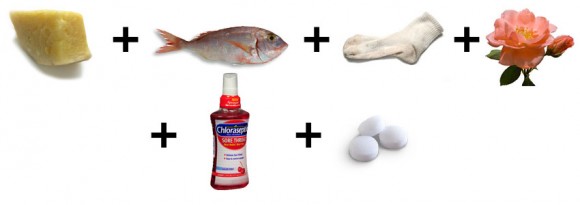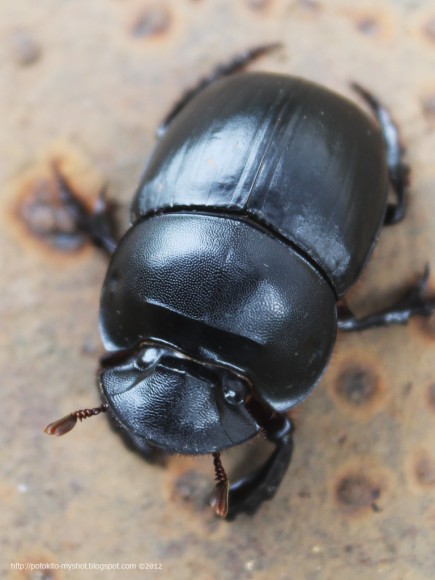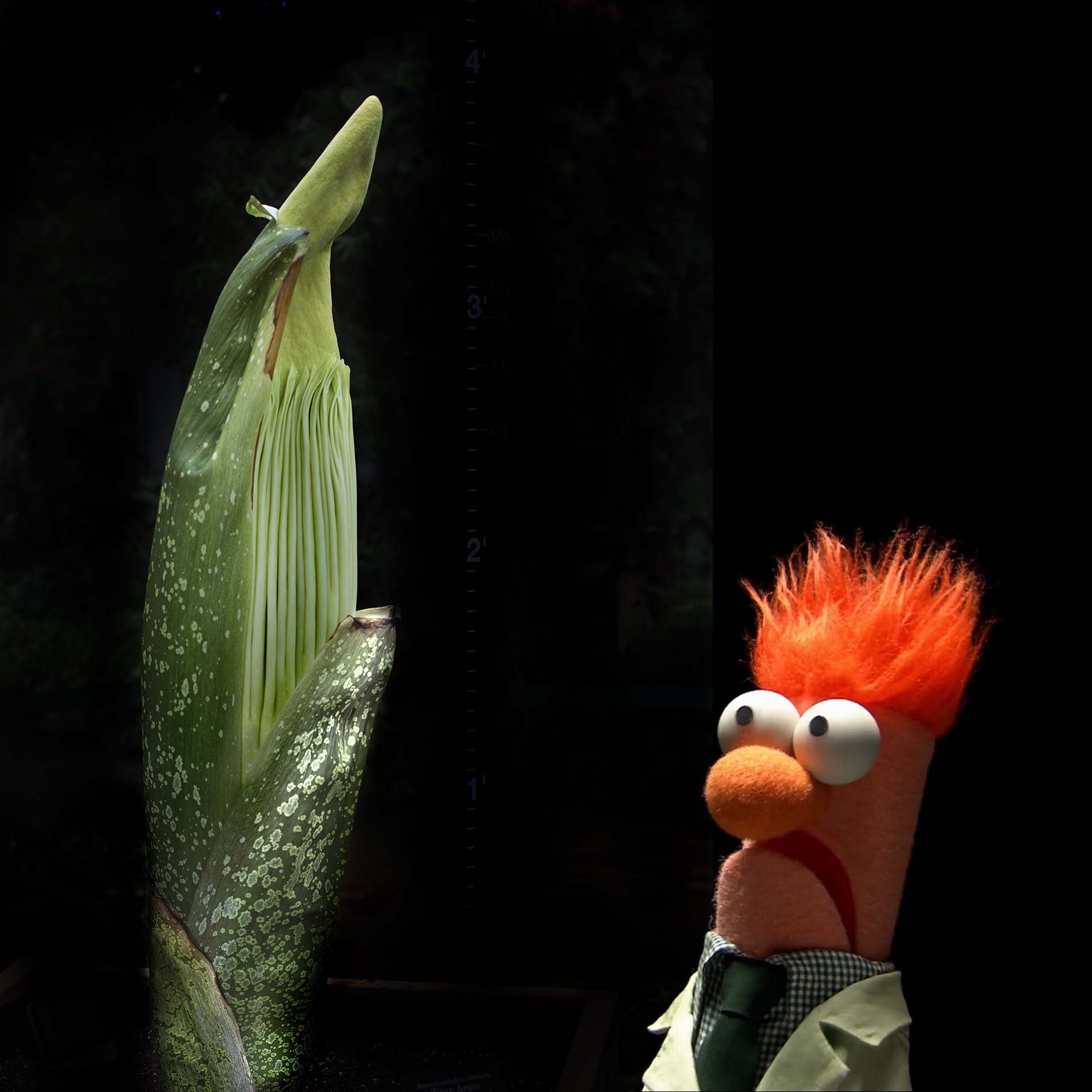The night Spike blooms will thrill us all in the semi-tropical greenhouse, with its breathtaking flower…accompanied by a titanically rotten smell.
“Your heart is full of unwashed socks, your soul is full of gunk, Mr. Grinch. The three words that best describe you are as follows— and I quote: stink, stank, stunk!”
—Dr. Seuss
“Titan Tim” Pollak here once again, with an update on Spike, our still-growing titan arum. Spike continues to get bigger, not only in height, but also in girth! What we’re really curious about, however, is the aroma.
The stench is one of the cool reasons to stay up late and come to the Garden that night—we’ll be open from 9 p.m. to 2 a.m.
Here’s what to expect in terms of scent:

- As the spathe gradually unfurls, the spadix releases powerful odors meant to attract pollinators. The potency of the aroma gradually increases from late evening until the middle of the night and then tapers off as morning arrives.
- Analyses of chemicals released by the spadix show the “stench” includes dimethyl trisulfide (like limburger cheese), dimethyl disulfide, trimethylamine (rotting fish), isovaleric acid (sweaty socks), benzyl alcohol (sweet floral scent), phenol (like Chloraseptic), and indole (like mothballs).
- The titan arum’s odor has been described in many other terms as well: rotting flesh, rancid meat, rotting animal carcass, old dirty socks, and even the smell of death itself, which accounts for the plant’s common name, the corpse flower.
- In its natural habitat on the island of Sumatra in Indonesia, the “fragrance” is used to attract the carrion-eating beetles, dung beetles, and flesh flies that pollinate the titan arum. The inflorescence’s deep red color and texture contribute to the illusion that the spathe is a piece of meat.
- During bloom, the tip of the spadix is approximately human body temperature, which helps the fragrance volatilize (turn to vapor) and travel long distances; the heat may also advertise that there’s a fresh carcass for insects to check out.

A different view of ewwww!
Carrion beetles, dung flies, and flesh flies aren’t responding to the call of the titan arum’s scent because they want to be pollinators—they’re responding because they want a good environment in which to lay their eggs.
In the wild, mama beetles and flies lay eggs on dead animals or animal feces knowing that the larvae that hatch will have an immediately-available, rich source of food.
In its natural rainforest habitat, the titan arum has adapted to that fact. Over evolutionary time, it has developed the right scent to attract those insects—and, like many scented flowers, to deceive them with scent into acting as the unwitting spreaders of their pollen.
Keep checking back for more on Spike’s progress!
©2015 Chicago Botanic Garden and my.chicagobotanic.org


Will there be barf bags for curious onlookers who are visually drawn but viscerally repulsed?
While Spike’s smell is obnoxious by human standards, we do not expect any staff, volunteers, or visitors to become physically ill.
does smell attract dogs? my dog has run away two of the last three days. never does this. Has run to the gardens about a mile away both times
Herbert—it’s far more likely your dog is following deer to the Garden and surrounding forest preserves at this time of year. :) While the titan arum’s odor is powerful the first few hours after it blooms, it diffuses quickly during bloom. Right now, pre-bloom, it does not smell at all. —Tim
Is there any ‘special event’ fee for seeing Spike?
Can the online parking permit be used for the after-hours time slot?
Will people be able to photograph themselves next to Spike?
Thank you!
Thank you for your excellent questions, David! We’ll be updating our website with this information shortly:
There is no special exhibition fee for viewing Spike the corpse flower. During the Garden’s summer hours of 7 a.m. to 9 p.m., regular parking fees will apply to visitors. Online advance parking purchases are encouraged if you will be visiting during these hours! On the evening Spike blooms, there will be no parking fees after 9 p.m., and the Garden’s Semitropical Greenhouse will remain open until 2 a.m. for visitors to come view the bloom.
While we realize there’s nothing like a selfie with Spike, visitors will need to remain behind the cordoned area. However, many volunteers and staff will be on hand to take assist in taking photos with the plant. For safety reasons, strollers and tripods will not be permitted in the exhibition.
Thanks for keeping us updated Titan Tim. You really know alot about this plant. Chicago Botanical Garden is very lucky to have you.
Thanks, Matt P. I love my job, especially when something like this comes along!
I sure hope it blooms overnight. I’ve got schedule conflicts coming up. I especially want to note what I smell. The ptomaine compounds are the signature “smell of death.” I’ve smelled ptomaines 3 times. I can’t re-imagine the smell – but I recognize it when I smell it. The list of compounds in Spike’s emanations don’t includes ptomaines. Of course I am sure carrion emits odoriferous compounds in addition to ptomaines.
I’m glad I went today, because at my last look I could see the unfurling of the flower starting.